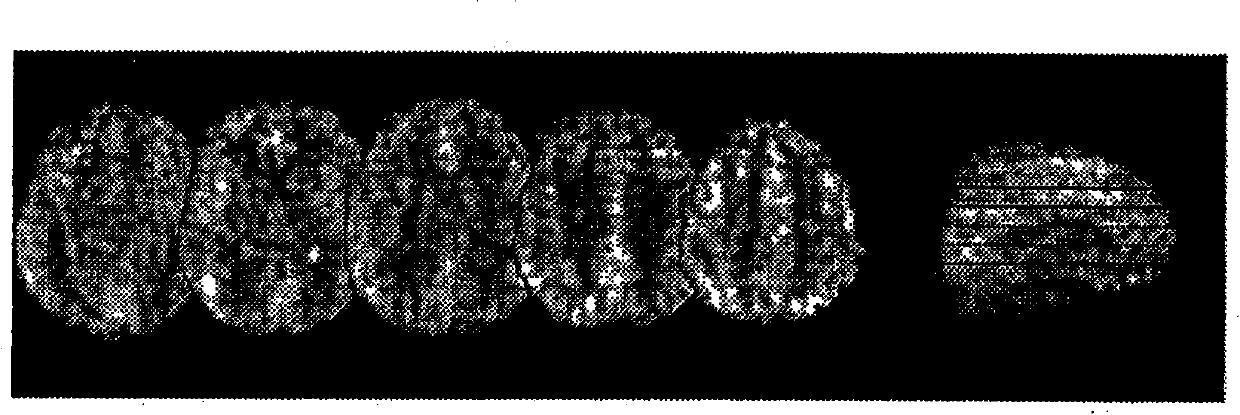Methods for treating disorders using nmda nr2b-subtype selective antagonist
A technology of disease and dosage, applied in the direction of anti-inflammatory agents, non-central analgesics, anti-tumor drugs, etc., can solve problems such as adverse side effects
- Summary
- Abstract
- Description
- Claims
- Application Information
AI Technical Summary
Problems solved by technology
Method used
Image
Examples
Embodiment 1
[0029] A double-blind, placebo-controlled, randomized, single and multiple oral dose study was conducted to determine the safety and tolerability of the dihydrochloride salt of the compound of formula (I) in healthy young and elderly subjects. Conduct research in two parts.
[0030] Part 1 comprised an incremental single-dose, sequential group study in 48 young male subjects incorporated into a two-period crossover arm to investigate the effect of food. Part 2 comprised an incremental multiple-dose, sequential group study in 24 young male subjects and an incremental single- and multiple-dose, sequential group study in 18 elderly subjects (10 males and 8 females) . On each dosing occasion, subjects received a single capsule containing an appropriate amount of the dihydrochloride salt of the compound of formula (I) or microcrystalline cellulose. The treatment was administered orally with 240 ml of water while the subject was in an upright position.
[0031] The condition of e...
Embodiment 2
[0037] A double-blind, placebo-controlled study was performed in 19 healthy volunteers to investigate the effects of selective antagonism of the NMDA receptor NR2B subunit on cognitive function and neurophysiology, as measured by magnetic resonance imaging (MRI). This study utilized functional MRI to measure regional cerebral blood flow (rCBF) changes and putative modulation of neural networks during cognitive tasks performed by subjects administered the dihydrochloride salt of the compound of formula (I).
[0038] experimental method
[0039] Nineteen healthy male volunteers participating in this study were scanned using functional magnetic resonance imaging (fMRI) while performing cognitive tasks (including the PAL task described in more detail below) designed to measure associative learning, sustained attention, and episodic memory. These tasks were repeated on three study days, followed by fMRI sessions 2 hours later. On these three different occasions, participants rece...
Embodiment 3
[0069] The use of CSF sampling in drug development to assess drug or disease response has shown increasing relevance. CSF sampling values for assessing central drug penetration and measuring bioactive substances have been consistently recognized. In general, CSF biomarkers enable therapeutic candidates to be examined more efficiently, exposing fewer people to ineffective drugs and doses, and accelerating the identification of effective therapies.
[0070] Lumbar puncture (LP) (as in intrathecal delivery of anesthetics, analgesics and chemotherapy) is routinely performed in a variety of clinical settings in diagnosis and treatment (Roos (2003) Lumbar puncture. Semin. Neurol. 23( 1): 105-14). Cerebrospinal fluid is produced by the ventricles (mainly the lateral ventricles) at a rate of 500ml / day. Since the volume that can be contained by the brain is of the order of 150 ml, it is often replaced (3-4 times a day with a turnover) and the excess enters the blood. This continuo...
PUM
 Login to View More
Login to View More Abstract
Description
Claims
Application Information
 Login to View More
Login to View More - R&D
- Intellectual Property
- Life Sciences
- Materials
- Tech Scout
- Unparalleled Data Quality
- Higher Quality Content
- 60% Fewer Hallucinations
Browse by: Latest US Patents, China's latest patents, Technical Efficacy Thesaurus, Application Domain, Technology Topic, Popular Technical Reports.
© 2025 PatSnap. All rights reserved.Legal|Privacy policy|Modern Slavery Act Transparency Statement|Sitemap|About US| Contact US: help@patsnap.com



